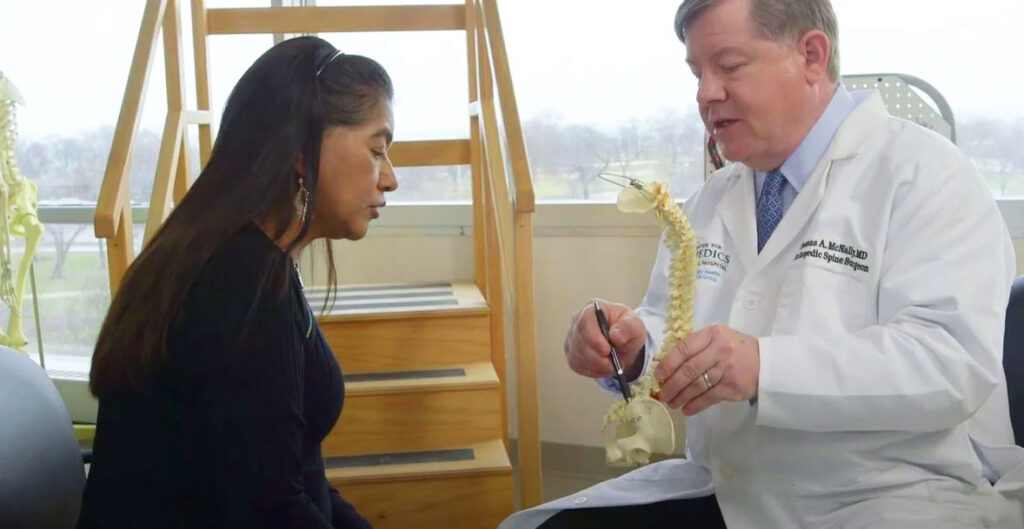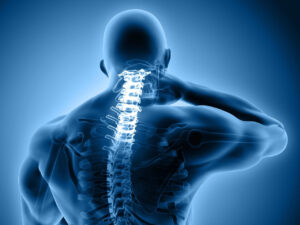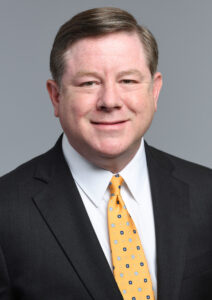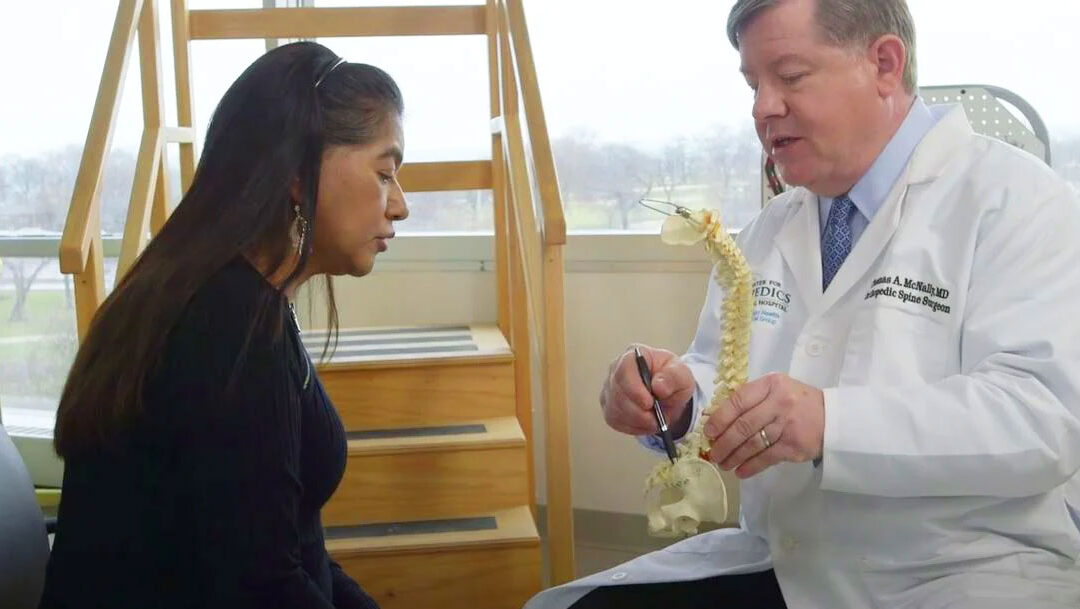The National Scoliosis Foundation reports an estimated 7 million people in the United States are living with scoliosis. While many people are familiar with the medical term “scoliosis,” defined as an abnormal curvature of the spine, they may not realize the condition affects not only children and adolescents, but adults, too.

Pictured above: Weiss Orthopedic Surgeon and Spine Center Medical Director Thomas A. McNally, MD, discusses spinal health with a patient.
Here are some additional facts about scoliosis you may not be aware of.
 Scoliosis is a sideways curve of the spine. According to the American Academy of Orthopedic Surgeons, a spine with scoliosis curves, sometimes looking like the letter “C” or “S,” instead of a straight line down the middle of the back. The aging process can cause or increase symptoms of scoliosis, especially as people move into their senior years.
Scoliosis is a sideways curve of the spine. According to the American Academy of Orthopedic Surgeons, a spine with scoliosis curves, sometimes looking like the letter “C” or “S,” instead of a straight line down the middle of the back. The aging process can cause or increase symptoms of scoliosis, especially as people move into their senior years.
Scoliosis is a concern for adults, too. Two common types of adult scoliosis are idiopathic scoliosis and degenerative scoliosis.
According to the Scoliosis Research Society, adult idiopathic scoliosis is the progression of the spine curvature that began in adolescence and continues as an adult. Disc degeneration, spinal stenosis, and arthritis can lead to progression of spinal curvature over time.
Adult degenerative scoliosis stems from disc degeneration, arthritis of the facet joints, and collapse or narrowing of the disc spaces. This type of scoliosis is typically seen in the lower back and can result in the straightening of the natural spinal curve.
Common symptoms of both adult idiopathic and degenerative scoliosis include low back pain and stiffness; numbness, cramping, and shooting pain in the legs caused by pinched nerves; and fatigue resulting from muscle strain. By comparison, adolescent scoliosis is not usually painful.
Several treatment options are available to help mitigate scoliosis pain. For adults with less severe symptoms, non-operative treatments include over the counter pain relievers, exercises, physical therapy, and nerve block injections. For those needing surgical care, procedures include microdecompression, surgical stabilization, fusion, osteotomy, and vertebral column resection.
 Expert care at the Chicago Center for Orthopedics at Weiss.
Expert care at the Chicago Center for Orthopedics at Weiss.
“Because scoliosis is degenerative and cannot be prevented, it is important to keep your core strong and work on your flexibility as you age. Living a healthy lifestyle goes a long way. Be sure to get proper nutrition and participate in regular exercise, stretching and strength training,” said Orthopedic Spine Surgeon Thomas A. McNally.
Dr. McNally is the medical director of the Spine Center at the Chicago Center for Orthopedics at Weiss Memorial Hospital.
If you would like more information about the treatment of scoliosis in adults, please call 773-564-7770 for an appointment with Dr. McNally.

